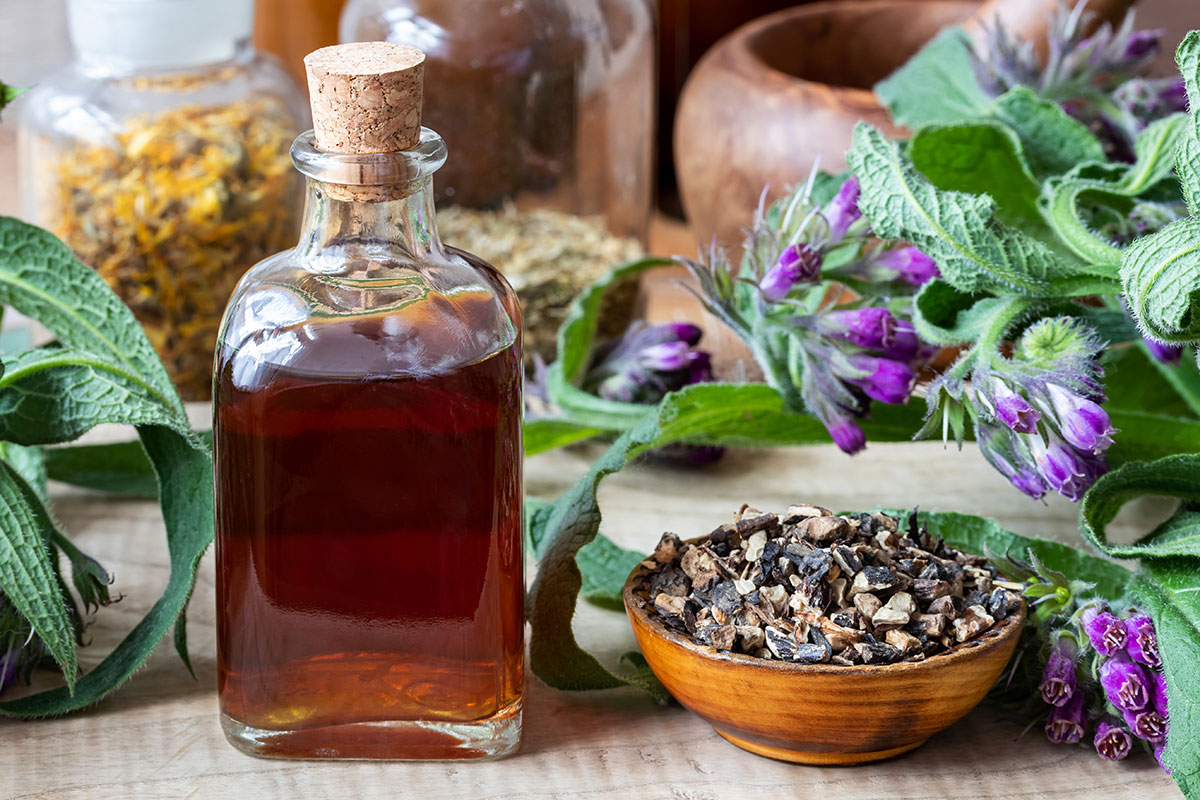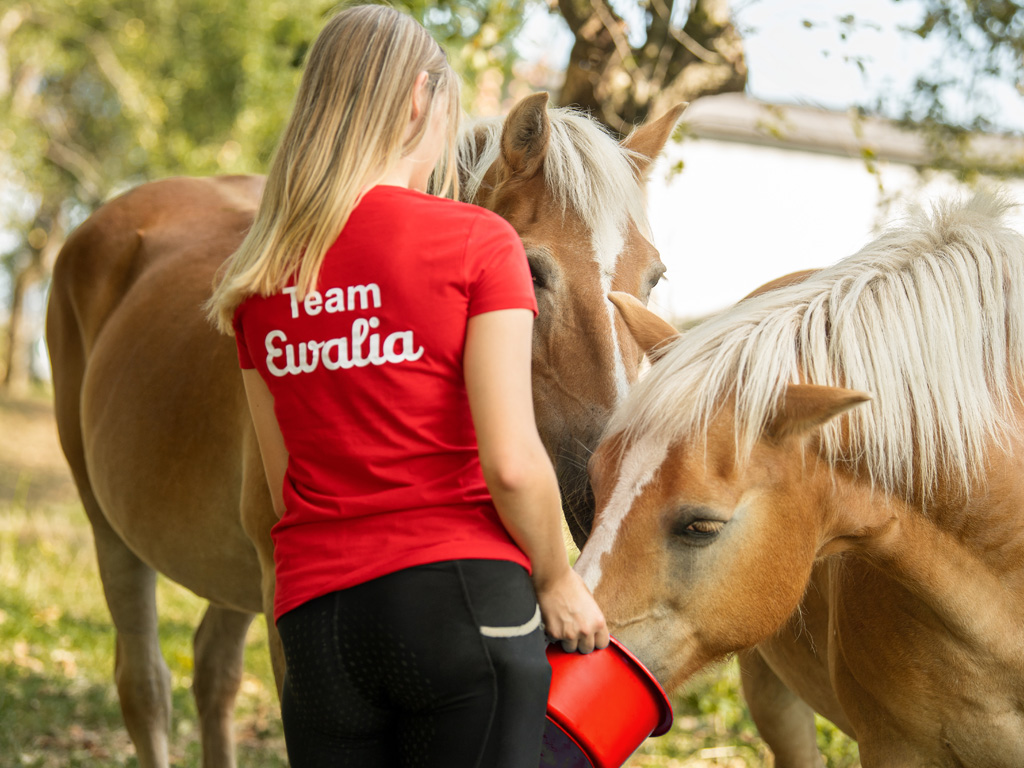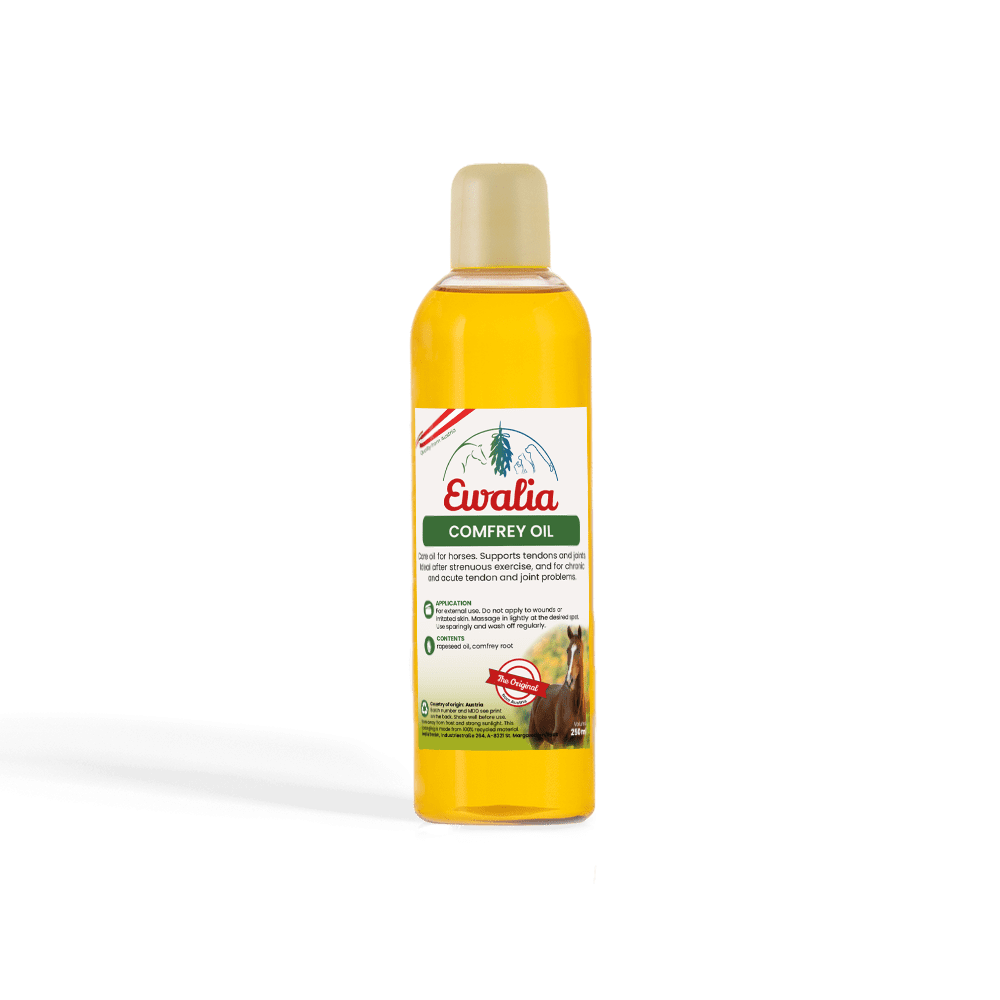Comfrey root

Ordnung: Lamiidae
Family: Boraginaceae
Subfamily: Boraginoideae
Genus: Symphytum
Origin and occurrence:
Europe to Siberia and China
Active ingredients:
Allantoin, tannins, rosmarinic acid, mucilages, caffeic acid.
Main application in veterinary medicine:
EXTERNAL ONLY: To promote circulation before or after heavy exercise or training, for bruises, sprains and strains.
Main uses in human medicine:
For external use for painful muscle and joint complaints, bruises, strains, sprains as well as for local blood circulation promotion and rheumatism.
Interesting facts about comfrey root
Already Hildegard von Bingen (11th century) was aware of the effect of comfrey. Broken bones, wounds or ulcers were treated with compresses with comfrey root. The contained allantoin liquefies pus and allows tissue cells to form anew (granulation). According to efficacy studies, the analgesic, anti-inflammatory and swelling-reducing effects were clearly visible in acute ankle strains compared to placebo products. Further studies were able to demonstrate an absolutely comparable effect with diclofenac gel in the case of leg corrugation ointment. An observation of 300 children also demonstrated the success of comfrey root ointment in bruises and sprains simultaneously with good tolerance.
Alternative names:
Comfrey root, forest root, medicinal root, snow root, leg root, comfrey, harmful medicinal root, wound root.
Important Notice:
Only for external use on intact skin! Do not apply to open wounds! Do not allow to be licked off!
Sources: Blaschek, W. (2016). Wichtl - tea drugs and phytopharmaceuticals. Stuttgart: Wissenschaftliche Verlagsgesellschaft.Pahlow, M. (2013). The big book of medicinal plants. Hamburg: Nikol Verlag.Reichling, J., Gachnian-Mirtscheva, R., Frater-Schröder, M., Di Carlo, A., & Widmaier, W. (2008). Medicinal herbalism for veterinary practice. Berlin-Heidelberg: Springer Medizin Verlag.
Authored by Bianca Becker-Slovacek on Jun 19, 2019.
Our products are not medicinal products. Therefore, they do not serve the treatment of pathological conditions or associated symptoms. Feed as well as care products serve exclusively to support and care for your healthy horse. For the treatment of a disease or other therapy recommendations is solely your veterinarian or veterinary practitioner responsible.














